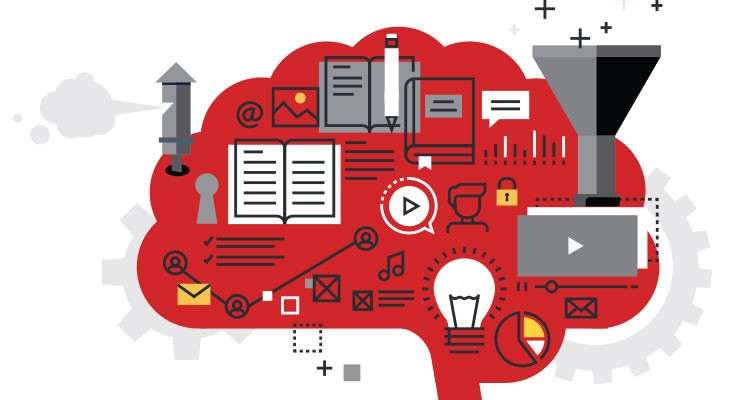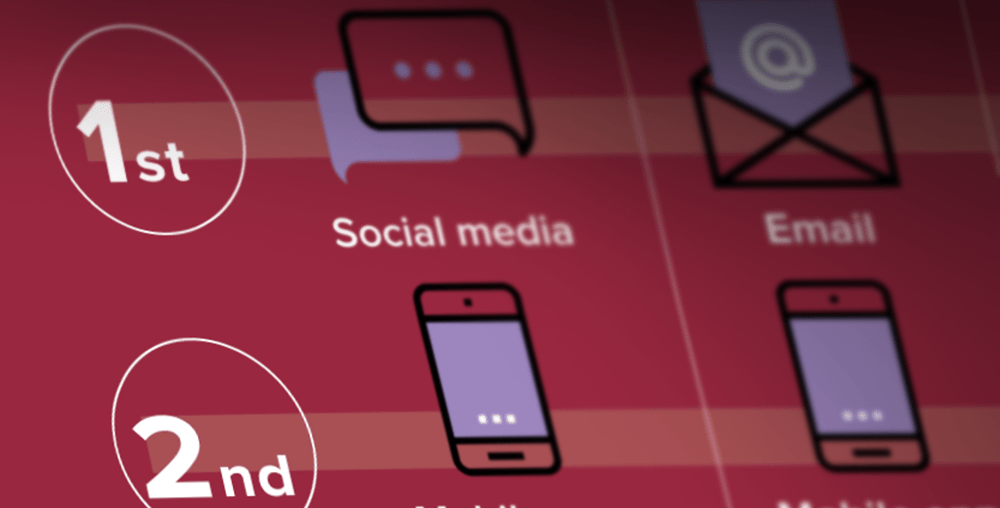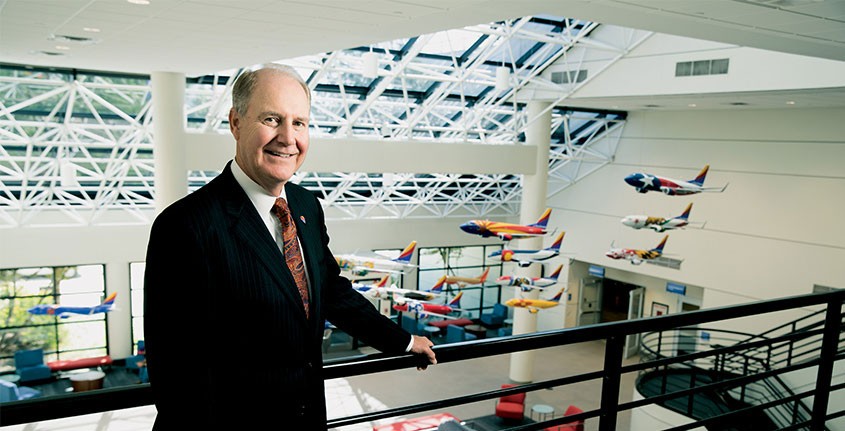Technology Is Transforming the Customer Mindset
When IBM originally developed Watson, the supercomputer’s purpose was straightforward: to compete on (and win) the U.S. quiz show Jeopardy. Now, however, the technology platform, which uses natural language processing and machine learning to reveal insights from large amounts of unstructured data, has been tasked with tackling a much bigger challenge: elevating the customer experience.
Earlier this year, Macy’s announced it would be using Watson to develop a pilot version of “Macy’s On Call,” a cognitive mobile web tool that will allow shoppers to ask questions regarding participating stores’ unique product assortments, services and facilities, and then receive a customized response. Powered by artificial intelligence (AI), the system evolves as it learns more about each store’s customers.
Macy’s investment in this AI-powered tool is just one example of how technology is reshaping customer experience expectations. According to Warren Tomlin, chief innovation officer at IBM iX (interactive experience), executives need to take note of how the proliferation of technology—particularly mobile—has put everything at customers’ fingertips. Mr. Tomlin says organizations must transform radically in the face of disruptive new consumer mindsets.
“Mobile, digital and cognitive computing have become synonymous with the word ‘modern,’” Mr. Tomlin says. “Organizations must think about these technologies and figure out how to create a faster, better and more personalized experience—for customers, employees and business partners. That’s the end game.”
“Organizations must think about these technologies and figure out how to create a faster, better and more personalized experience—for customers, employees and business partners.”
Mr. Tomlin has a front-row view of this shift. He is responsible for developing IBM’s global capabilities and practices around a vast swath of digital technologies at the international tech giant. These include: augmented reality and virtual reality (AR/VR), wearables, drones, connected devices, blockchain, mobile payments and tokenization, advanced robotics, smart machines and mobile.

IQ recently spoke with Mr. Tomlin about how digital disruption will likely play out in the coming years, what the strategic arc required to navigate the digital age successfully looks like and what it all means for organizations hoping to master the customer experience.
IQ: How has technology changed consumer mindsets?
Warren Tomlin: There are two angles to consider, both consumers as consumers of products and services, and consumers that transition to employees for part of their day. In the former, it is critical to understand two key consumer trends. First, consumers are being conditioned to want to participate in the development of products and services Share on X—in effect to “co-create” products and services. They want to have a say and a sense of contribution to what they are receiving. Companies need to listen loudly to all channels to anticipate the needs and wants of consumers that can be unlocked with technology.
Additionally, tolerance for “one-size-fits-all” experiences is becoming very low. We believe the last best experience a consumer has (regardless of channel) becomes the minimum expectation they have going forward for every other brand. That personalized experience is only made possible by leveraging data and technology.
In addition to the above, enterprise employees (consumers in the enterprise environment) are increasingly expecting consumer-grade experiences. That is to say, for example, a mobile experience that is comparable or better than the consumer apps they engage with on a daily basis.
 IQ: How must executives change their thinking to reinvent the organization and revamp the customer experience?
IQ: How must executives change their thinking to reinvent the organization and revamp the customer experience?
WT: As digital technologies take hold, we are seeing new ways to interact and transact. The roots of this transformation really began in earnest around 2007, when Apple launched the iPhone. We saw a democratization of software through the app store, and we saw mobile, cloud computing and other digital tools and technologies take hold. As a result, organizations have recognized a need to address consumerization. They must operate within a more agile and flexible framework, and adopt a more personalized approach with multichannel or omnichannel capabilities. It is important to ask: “How can we truly transform processes to address this model?”
Today, we see an exciting yet difficult time of digital reinvention. Uber is a good example. It shows how a combination of technologies and new thinking can disrupt an entire industry—and introduce new challenges for some and new opportunities for others. For organizations, this requires a new type of collaborative cooperation. Within today’s enterprise, we now see a huge need for line of business and IT teams, including the CIO, CTO, CDO and CMO, to work closely.
IQ: How will disruption play out for organizations as they formulate a digital strategy?
WT: Enterprises must shift from a monolithic, waterfall, heavy-lifting deployment model to an agile model where people think big but start small. You scale fast or fail fast—and you better be prepared to fail often. Share on X It’s important to ask: “What’s our MVP?” In this context, MVP means minimum viable product or minimum value proposition. Instead of trying to build a perfect beast and watching it tip over before you can complete it, you keep adjusting and tuning to reflect a changing marketplace and business environment. This takes a type of maturity inside the enterprise that we haven’t seen in the past 50 years.
IQ: Where do great ideas for utilizing new technology come from?
WT: Great ideas can come from anywhere and everywhere: cross-functional teams, innovation garages and labs, social media and crowdsourcing, and customers. We recognized the shift several years ago: IBM began to produce innovation spaces to co-create with our customers.
Yet, ideas don’t always have to be original. One thing I am waxing on is the concept of “immovation.” Immovating means imitating and innovating based on what works in other industries and sectors.
“Enterprises must shift from a monolithic, waterfall, heavy-lifting deployment model to an agile model where people think big but start small.”
For instance, the CEO of one of our banking clients in North America repeatedly visited Apple stores. He would drop a pen to see what it looks like under the tables—how everything was [wired and] connected—because he wanted to think about how to design the retail bank of the future. The Apple Store is the ultimate retail experience. The CEO recognized that he shouldn’t focus on other banks. He had to examine what top retailers are doing. Everything doesn’t have to be leading-edge innovation. It can simply be about learning and applying from the best of other companies or industries.
IQ: How can executives focus on the right set of digital technologies when so many possibilities exist, ranging from AI and machine learning to AR/VR, drones, robotics, wearables and 3-D printing?
WT: The first thing executives need to do is overcome the fear. If you’re not careful, you can lull yourself into thinking: This is The Jetsons. You can wind up paralyzed. You have to figure out how to liberate innovation within organizations typically designed to prevent it.
At IBM, we use two different lenses to overcome fear and resistance. We devote R&D to technology—typically $5 billion to $6 billion each year—and really focus on what’s best for our customers. One key factor is to simply get the discussion going. Otherwise, you risk becoming obsolete. If you take the Fortune 500 list from the year 2000 and compare it to today, a lot of those companies aren’t around any longer. Many of them weren’t able to respond to the change and disruption.

You also have to avoid getting into an either/or mindset. These technologies are developing and morphing so rapidly that they’re impossible to predict. Enterprises have to be comfortable with being bold. You have to start small but be prepared to scale fast. You have to be prepared to iterate because the course may change while you’re on it. Ultimately, it’s critical to think about things within the context of delivering value to customers, partners and employees. In the end, it’s really about allowing people to do things faster, better and smarter. This might mean developing or deploying an AR headset or using drones. It may be as basic as issuing iPads to remote field workers. It’s not about the technology, it’s about what it delivers.
IQ: How do you see the digital space evolving over the next 10 years?
WT: We will undoubtedly see drones, AR/VR, AI, machine learning, wearables, smart machines and robotics take off. We will see advancements in the mobile and cloud spaces. We are already seeing some technologies, such as blockchain, take hold. It creates a new and more secure way to track transactions in the digital space. Many businesses, including banks, are already using it.
But in the end, it’s not about the technology. In five or 10 years, there will be a new set of technologies and new combinations of technology that we can’t envision. It’s ultimately about the relationship of business and technology leaders and how they interact. There has to be an acknowledgment that digital business, innovation and transformation are a team sport.



